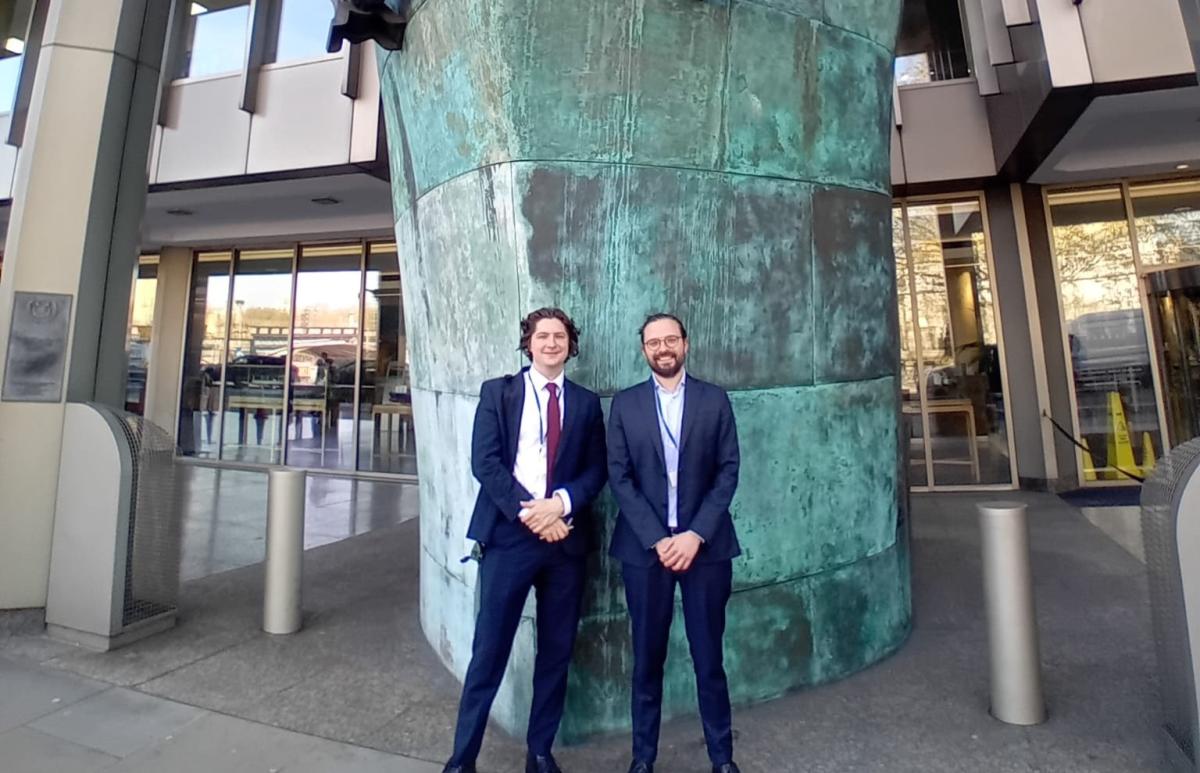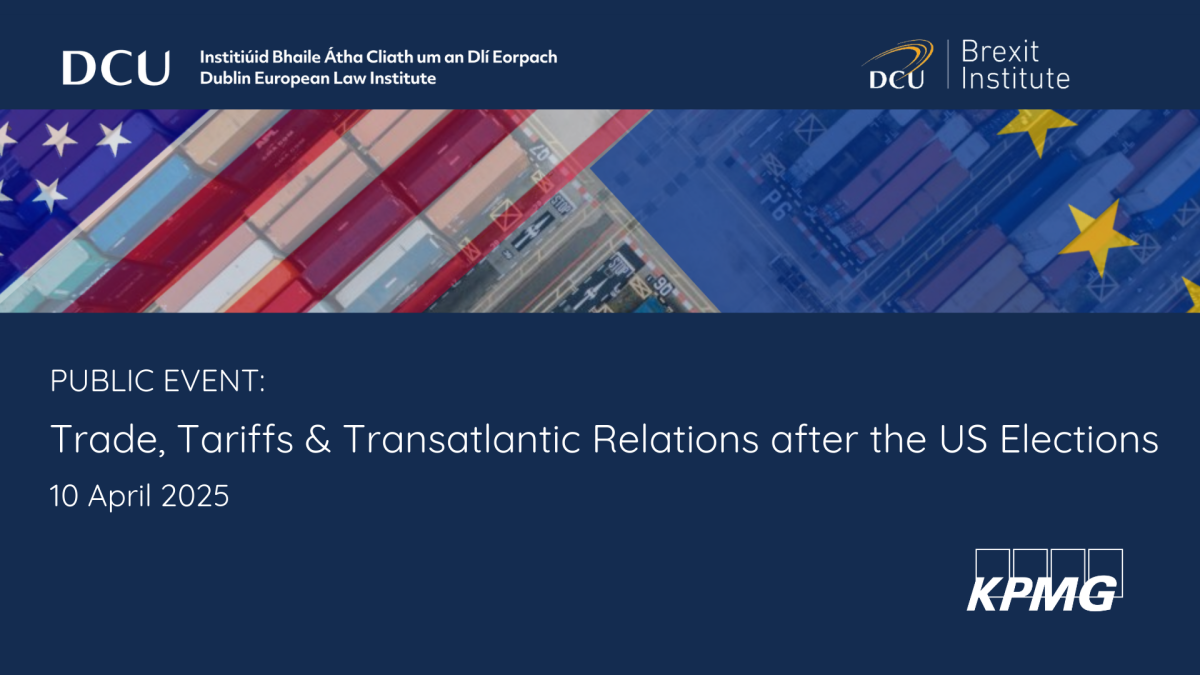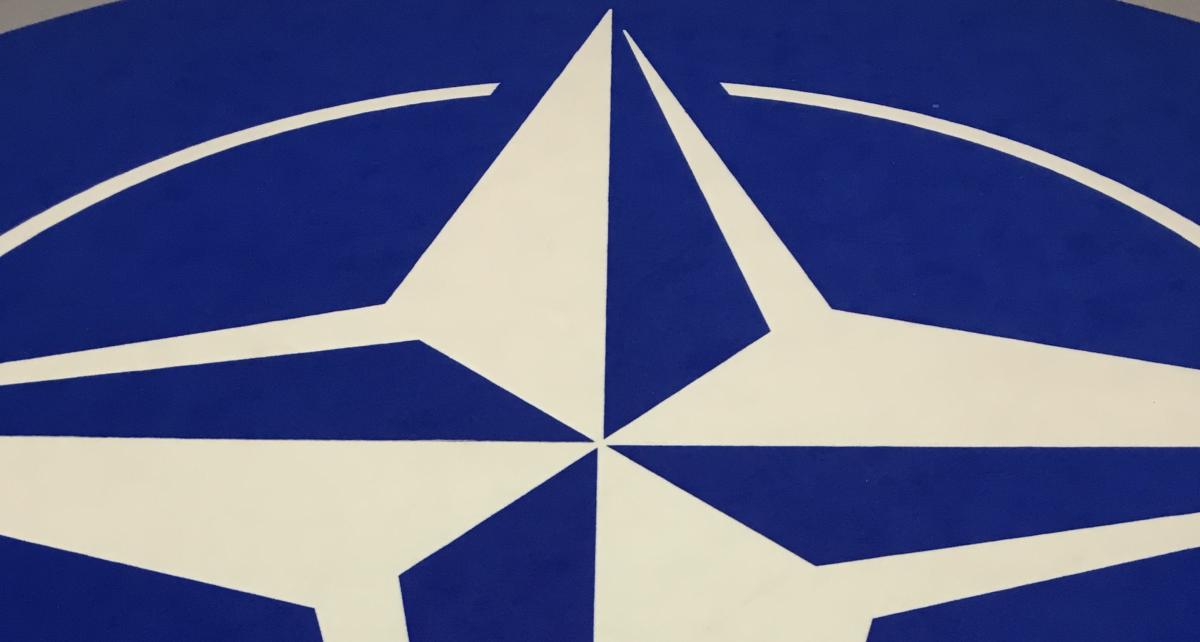
Goran Dominioni (Assistant Professor, School of Law and Government, DCU)
Oscar Leonard (Researcher, School of Law and Government, DCU)
11 April marked a significant moment for the international shipping industry and global trade. The International Maritime Organization (IMO) — the UN agency that regulates international shipping — approved a new measure to reduce greenhouse gas (GHG) emissions from the sector. The measure combines a fuel standard with a GHG pricing mechanism and can have significant repercussions for EU policy-making.
If adopted at the next meeting of the Marine Environmental Protection Committee, scheduled for Fall 2025, this measure is set to be a key legal driver of shipping decarbonization at the global level through 2050. In an increasingly fragmented geopolitical environment, this agreement represents a beacon for multilateral cooperation to address global challenges, even though the round of negotiations proved particularly challenging.
Chief amongst these challenges was the strong opposition voiced by a number of countries, which necessitated substantial compromises being made. This was a disappointment for those who had entered the negotiations with the hope of passing a highly ambitious measure that aligns with the decarbonization targets set by the IMO and raises sufficient revenues to support an effective, just and equitable transition. The United States was notably absent from the meetings; but tried to influence the outcomes from the outside. On Wednesday, they sent a demarche to some London embassies outlining their opposition to both the Paris Agreement and to any set of measures that “unduly or unfairly burdens the U.S. or the interest of the American people” and urged them to reconsider their “support for the GHG emissions measures under consideration.” During the negotiations, Saudi Arabia was particularly vocal in opposing the measures, joined by a number of Gulf states, along with Russia, Thailand, Venezuela, and Iran. Despite this opposition, the approval of the measure passed with a significant margin.
Outcomes:
- A coalition of countries, including the EU along with many Pacific, Caribbean and African states amongst others, had been seeking a flat levy on all carbon emissions from shipping. This was not successful, and a compromise was eventually introduced, whereby ships with emissions above a certain threshold would have to pay a GHG price.
- The threshold for what counts as a ‘zero or near-zero fuel’ is likely to include some but not all biofuels. At the moment, it is unclear whether the uptake liquified natural gas (LNG) will be sufficiently disincentivized by the measure. Disincentivizing the use of LNG is very important to reduce the risks of stranded assets and carbon lock-in.
- The measures in their current form are not likely to be sufficient to bring the industry in line with the GHG targets and interim checkpoints set in the 2023 IMO GHG Strategy to net-zero “by or around” 2050. Hopefully, further revisions of the framework will strengthen its stringency.
- The text governing revenue distribution has clear potential for a wide range of uses, and prioritizes the most vulnerable countries. As highlighted in a World Bank report led by Goran Dominioni, the use of revenues beyond shipping would be an essential component of an equitable transition. Interpreting this text will be a significant task moving forward.
Climate Justice and the Equitable Transition
A central topic in the negotiations has been the need to deliver a just and equitable transition as agreed in the 2023 IMO GHG Strategy. Many countries, including a group of Pacific states, strongly supported a levy and felt that this was vital to generating enough revenue to make the energy transition equitable. However, it remains unclear whether much revenue will be available to spend on projects in these countries after annual rewards for greener vessels have been paid out.
The credit trading mechanism of the measure is likely to favor countries with a strong industrial policy, as credits are likely to be earned by entities with the technical capacity and financial resources to build, retrofit, and fuel greener ships the fastest, leaving only less well-off countries paying for remedial units.
Implications for EU Policy-Making
The deal may also have significant repercussions for EU policymaking, as the EU is set to review key maritime decarbonization policies in light of the action taken by the IMO. EU member states voted in favor of the measure and coordinated action throughout the negotiations.
The measure is similar to FuelEU Maritime (FEUM), although it differs in some aspects. The measures put forward at the IMO will of course apply to EU countries already covered by the EU ETS and FUEM, so there is clear potential for a situation to arise involving double-pricing, whereby ships calling EU ports will be subject to both payments. One potential avenue to resolve this would be via a crediting mechanism, whereby contributions to one measure are taken into account and discounted in the other. Making changes to the EU ETS will be challenging, particularly given the scale of revenues raised by the measure (around €175bn since 2013).
While posing a fiscal challenge for the EU, when seen from a broader perspective, the IMO agreement represents a key achievement of multilateralism. If adopted in the Fall, the IMO Net-Zero Framework, will be the prime example of an international instrument that raises and redistributes revenues based on a collective decision made at the international level to address a global problem. This is a major achievement and historical precedent in an increasingly fragmented world.

Dr. Goran Dominioni is an Assistant Professor in Climate Change Law and Policy at the DCU School of Law and Government. HIs primary research interests are Carbon Pricing, International Maritime Transport, and Climate Change Law.

Oscar Leonard is a Researcher at the School of Law and Government of Dublin City University



